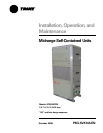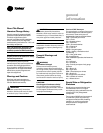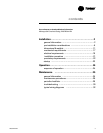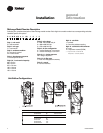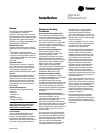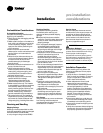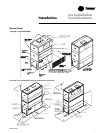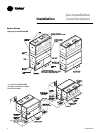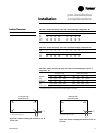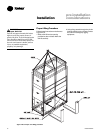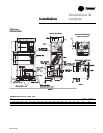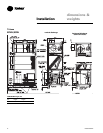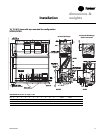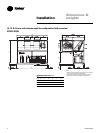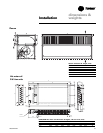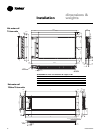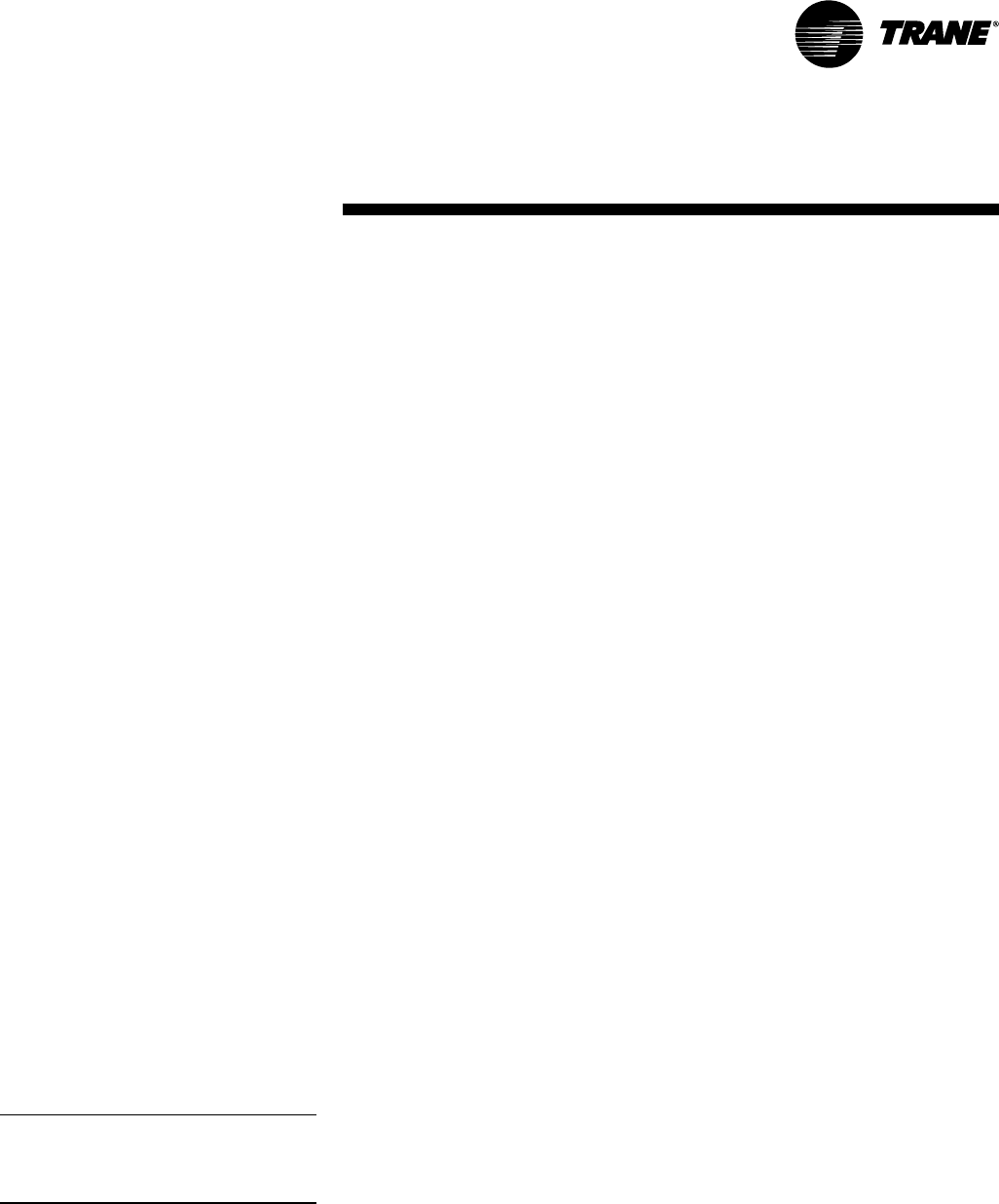
PKG-SVX14A-EN 5
Installation
general
information
General
The midrange models SCWH/SCRH
is a high efficiency, vertical air
condioner. units have either front or top
discharge configuration options and easy
service access. Unit construction is heavy
gage steel with a baked enamel finish.
Available unit voltages are 208/3/60, 230/
3/60, 460/3/60, and 575/3/60.
Refrigeration Circuits
Units are configured in single or double
refrigeration circuits. Each circuit consists
of:
• high efficiency scroll compressor
mounted on rubber isolation grommets
• evaporator coils designed for optimum
performance and efficiency with lanced
fins and rifled tubing
• filter-drier
Evaporator Section
The evaporator fan section consists of
one or two forward curved centrifugal
fans powered by a premium efficiency
motor through an adjustable motor
sheave and fixed diameter blower pulley.
Controls
The standard control panel consists of a
high voltage terminal block, overload
relays for each fan motor, transformer, 3-
pole 24-volt contactors for eachmotor
and compressor, and a 5-second delay
timer. Remote thermostat controls are
field installed.
Field-Installed Accesories
These items ship separately for field
installation:
• steam coil
• hot water coil
• plenum
• oversized motors
• remote thermostat
Note: Application of the above options
and/or accessories may require field
adjustment of fan speeds to ensure
proper airflow and performance.
Unit Nameplate
The unit nameplate identifies the unit
model number, appropriate service
literature, and wiring diagrm numbers. It
is mounted on the control panel door.
Reference this information when making
inquires or ordering parts or literature.
Refrigerant Handling
Procedures
Environmental Accountability Policy
Trane urges that all HVAC servicers to
make every effort to eliminate, if possible,
or vigorously reduce the emission of CFC,
HCFC, and HFC refrigerants to the
atmosphere. Always act in a responsible
manner to conserve refrigerants for
continued usage even when acceptable
alternatives are available.
Recover and Recycle Refrigerants
Never release refrigerant to the
atmosphere! Always recover and/or
recycle refrigerant for reuse,
reprocessing (reclaimed), or properly
dispose if removing from equipment.
Always determine the recycle or reclaim
requirements of the refrigerant before
beginning the recovery procedure.
Obtain a chemical analysis of the
refrigerant if necessary. Questions about
recovered refrigerant and acceptable
refrigerant quality standards are
addressed in ARI Standard 700.
Refrigerant Handling and Safety
Consult the manufacturer’s material
safety data sheet (MSDS) for information
on refrigerant handling to fully
understand health, safety, storage,
handling, and disposal requirements. Use
the approved containment vessels and
refer to appropriate safety standards.
Comply with all applicable transportation
standards when shipping refrigerant
containers.
Service Equipment and Procedures
To minimize refrigerant emissions while
recovering refrigerant, use the
manufacturer’s recommended recycling
equipment per the MSDS. Use
equipment and methods which will pull
the lowest possible system vacuum while
recovering and condensing refrigerant.
Equipment capable of pulling a vacuum of
less than 1,000 microns of mercury is
recommended.
Do not open the unit to the atmosphere
for service work until refrigerant is fully
removed/recovered. When leak-testing
with trace refrigerant and nitrogen, use
HCFC-22 (R-22) rather than CFC-12 (R-
12) or any other fully-halogenated
refrigerant . Be aware of any new leak
test methods which may eliminate
refrigerants as a trace gas. Perform
evacuation prior to charging with a
vacuum pump capable of pulling a
vacuum of 1,000 microns of mercury or
less. Let the unit stand for 12 hours and
with the vacuum not rising above 2,500
microns of mercury.
A rise above 2,500 microns of mercury
indicates a leak test is required to locate
and repair any leaks. A leak test is
required on any repaired area.
Charge refrigerant into the equipment
only after equipment does not leak or
contain moisture. Reference proper
refrigerant charge requirements in the
maintenance section of this manual to
ensure efficient machine operation.
When charging is complete, purge or
drain charging lines into an approved
refrigerant container. Seal all used
refrigerant containers with approved
closure devices to prevent unused
refrigerant from escaping to the atmo-
sphere. Take extra care to properly
maintain all service equipment directly
supporting refrigerant service work such
as gauges, hoses, vacuum pumps, and
recycling equipment .
When cleaning system components or
parts, avoid using CFC-11 (R-11) or CFC-
113 (R-113). Use only cleaning-solvents
that do not have ozone depletion factors.
Properly dispose of used materials.
Refrigeration system cleanup methods
using filters and driers are preferred.
Check for leaks when excessive purge
operation is observed.
Keep abreast of unit enhancements,
conversion refrigerants, compatible
parts, and manufacturer’s recommenda-
tions that will reduce refrigerant emis-
sions and increase equipment operating
efficiencies.



